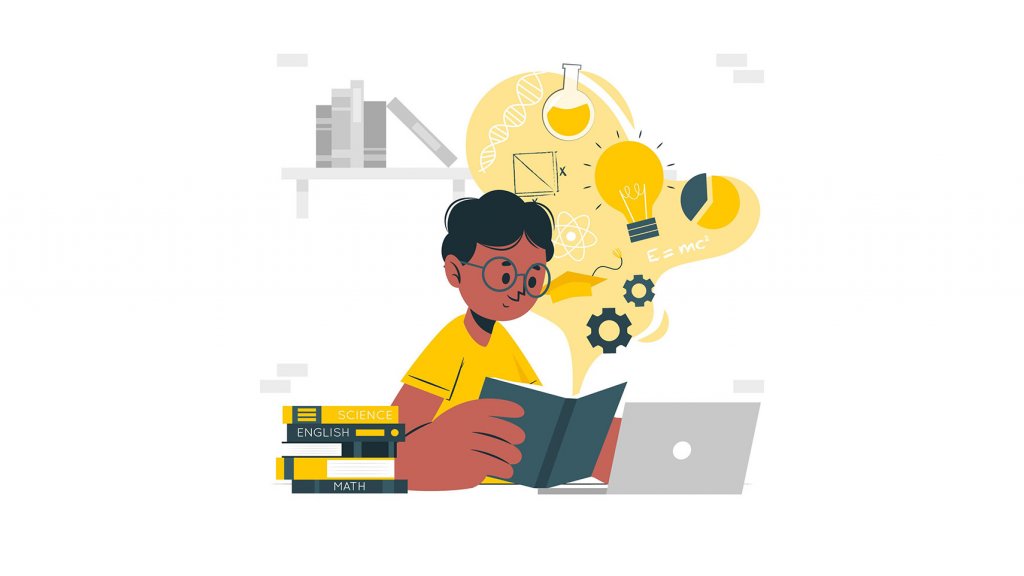Table of contents
In machine learning, the learning method and algorithm will change depending on the data you want to classify. Knowing these things will help you choose the appropriate learning method for your machine. In this article, we will explain in detail about classification and algorithms in machine learning.
machine learning concepts

First, let’s review the concept of machine learning. Reviewing the concepts will help you understand the classifications and algorithms that will be explained later in more detail.
What is machine learning?
Machine learning is a method of analyzing data, in which machines learn on their own the rules and patterns hidden in the data. In machine learning, it is important to be able to make accurate predictions based on data. In addition to learning the rules hidden in data, machines are now required to make predictions and decisions on their own based on what they have learned.
Relationship with AI and deep learning
Machine learning is included in AI, and deep learning is one of the methods of machine learning, so both machine learning and deep learning can be said to be learning methods and systems for executing AI.
Advantages of machine learning
The reason machine learning is attracting a lot of attention is because it has the advantage of being able to read patterns from large amounts of data in a short amount of time. Attempting to perform the same tasks manually would not only incur significant costs, but also increase the possibility of human error. Machine learning can automatically read accurate patterns and results hidden in large amounts of data in a time that humans cannot achieve. As the performance of computers has improved, so has their processing power, which has come to be considered an indispensable function in a variety of fields.
Machine learning learning methods are classified into three types

The methods by which computers perform machine learning can be broadly classified into the following three types. Let’s take a look at the characteristics of each.
supervised learning
This method involves inputting training data that indicates the correct answer, and then repeatedly training the model so that the output data approaches the training data. Teacher data is sometimes called teacher label, correct answer label, correct answer data, etc.
For example, if we input the data sparrow and the computer outputs the data crow, we will repeatedly learn to teach it that the data to be output is crow. It is mainly used for classification and regression.
unsupervised learning
This is a method of learning while discovering the structure and characteristics of the model without inputting correct training data. For example, in a Google search, if you enter just one keyword, “Japan,” a number of predicted keywords will be displayed. This is because the machine learns the keywords that are predicted to be entered next based on the large number of keywords entered so far. Unsupervised learning is mainly used for dimensionality reduction and clustering.
reinforcement learning
It is a method in which the computer itself learns the optimal behavior through trial and error in order to obtain the maximum reward. Of the three learning methods, it is the closest to human behavior. The biggest difference between supervised learning and unsupervised learning is that there is no need to collect or label data in advance. With the development of reinforcement learning, its use has become widespread in games, autonomous driving, robot control, elevator control systems, etc.
Other general classifications include semi-supervised learning, which is a learning method when a small number of labeled data and a large amount of unlabeled data are prepared, and deep reinforcement learning, which is a combination of deep learning and reinforcement learning. I can list it.
machine learning algorithms

Machine learning uses many algorithms. Simply put, an algorithm refers to a calculation method, and in order to obtain appropriate results, it is important to select an algorithm that matches the data and purpose of analysis. From here, we will explain each algorithm.
support vector machine
It is an algorithm that classifies data into two classes and finds a linear function (hyperplane) that separates them in the feature space, and is one of the supervised learning models. It has the advantage of being easy to separate correctly even with a small amount of data.
Logistic regression
Logistic regression is a model for solving classification problems. For the given data, it outputs not only which class it is classified into, but also how likely it is to be classified. For example, in two-class classification, the probability of developing a disease based on two factors is predicted, and if the probability is greater than 50%, the class is classified as “the disease will develop”, and if not, it is classified as “the disease will not develop”. categorize into classes.
random forest
Random Forest is an algorithm that uses multiple different classification trees to predict a problem and then uses majority vote to decide which class to classify into. The advantage is that there are fewer parameters that must be determined in advance by humans.
Feed Forward Neural Network
A neural network is a mathematical model inspired by neurons in the human nervous system, and is a model in which neurons are combined to form a multilayered network. By making this neural network larger and more complex, it is possible to perform more accurate machine learning called deep learning.
FFNN (Feed Forward Neural Network) is classified into three layers: input layer, hidden layer, and output layer. Data is input to the input layer, values are propagated to the hidden layer in order, and finally A predictive picture is made by propagating values to the output layer.
naive bayes
Naive Bayes is a model based on Bayes’ theorem, which is a theorem of probability theory, and is used to process classification problems. It is a very simple model that can handle large-scale data as it requires less calculation and is faster to process. The constraint is that the input features must be assumed to be independent.
Principal component analysis
Principal component analysis is a model that compresses high-dimensional features into fewer indicators and variables. In the feature space, data that is far apart is located far apart even when compressed, and it is easy to calculate how much information is retained during compression. By compressing it into fewer indicators and variables, it becomes easier to visualize the distribution of data as a graph.
k-nearest neighbor method
The k-nearest neighbor method is often used in pattern recognition. This method calculates the distance between unknown data and previously learned data, and determines classification by majority vote on the distance. It is considered the simplest of machine learning algorithms and is classified as lazy learning.
k-means
K-means is a type of clustering. Clustering is a method of grouping data into categories with similar characteristics, and by determining the number of clusters, all data belongs to one of the predetermined number of clusters.
Recurrent Neural Network
RNN (Recurrent Neural Network) is one of the neural network models. It has the characteristic of having a recursive structure inside the network, and is effective in tasks such as time-series data analysis and natural language processing. In the FFNN mentioned above, the features must be of fixed length. However, because text and time series data have variable lengths, there was a problem that FFNN could not input them as is. Since RNNs can handle variable-length inputs, they are often used to convert variable-length features into fixed-length features.
Generative Adversarial Networks
GAN (Generative Adversarial Networks) is a type of generative model that creates new data from input noise data and outputs it. GAN consists of a “generator” that generates data and a “discriminator” that determines whether the given data is training data or generated data. The generator learns to fool the discriminator, and the discriminator adversarially learns to correctly discriminate the generated data. As learning progresses, it will be possible to generate output data that can be mistaken for training data. It is famous for generating face photos of fictional characters.
Convolutional Neural Network
CNN (Convolutional neural network) is a neural network that has convolutional layers and pooling layers. Inspired by classical filtering processing, it is an effective model for extracting features from images. The filter for convolution is called a kernel.
What you can do with machine learning

So far, we have explained the classification and algorithms of machine learning. Machine learning has come to be utilized in a variety of situations by taking advantage of its capabilities. Here’s an example of how to use it.
System fraud detection
As I introduced earlier, supervised learning, a type of machine learning, involves giving a computer learning data with clear correct answers. This is a method that can be used to solve problems where there are clear correct and incorrect answers.
Detecting fraud in systems is one of the things machine learning can do. Systems such as detecting fraudulent transactions in online auctions and in financial services can be said to be essential to our daily lives.
stock price prediction
Stock price prediction utilizes the supervised learning regression that I mentioned earlier. By feeding a computer with stock price trends from one year ago or one month ago, as well as the latest stock price data, it can predict future stock prices. Stock price prediction is a technology that is particularly advanced in the field of AI, including machine learning, and it is not uncommon for AI to make predictions on behalf of humans.
image recognition
The technology by which a computer identifies what is in an image is called image recognition. Computers typically learn using supervised learning, but unsupervised learning is also possible.
In recent years, it has become possible to recognize images with complex characteristics, so even more precise grouping is expected in the future.
artificial teeth design
The University of California, Berkeley and the Institute for Advanced Dental Technology are jointly developing a GAN to design artificial teeth. This falls under unsupervised learning, and GAN refers to creating new data that includes original features. When comparing artificial teeth created by GAN and artificial teeth created by a dentist, the results showed that the former had a better bite.
self-driving
AI is an indispensable technology for driving a car, and a variety of research is actively being conducted to realize autonomous driving using AI. Driving in the city involves many complex elements, such as determining the state of traffic lights and avoiding collisions with pedestrians and bicycles, but with cars equipped with reinforcement learning algorithms, you can learn how to drive with a little training. It has been with.
summary
Machine learning can process data at speeds that humans cannot practice. In the future, the performance of machine learning will be demonstrated in more and more situations.
